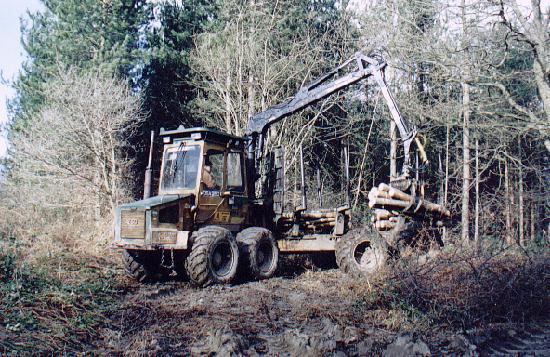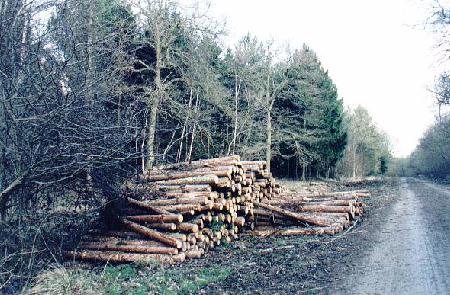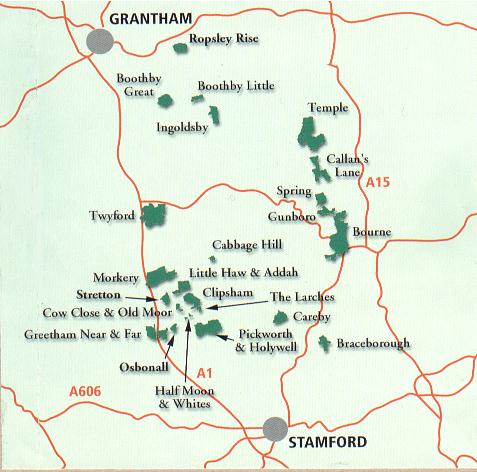|
The ancient woodland project
A major programme to reclaim the old forests of Middle England that have been chopped down and replaced with conifers in past years is currently underway in the woods. The Ancient Woodland Project launched by the Forestry Commission in 2000 is the biggest restoration scheme of its kind ever attempted in England, costing £1 million and taking 50 years to complete. It will affect almost 18,000 acres in
Northamptonshire, Rutland, Leicestershire, Bedfordshire, Buckinghamshire, Cambridgeshire and Lincolnshire, including Bourne where work is already underway. Areas of woodland that were felled as part of the national effort in two world wars will eventually be restored to the way they were 1,000 years ago, so recreating the landscape where kings and queens, including Henry VIII, hunted. The project will also revive hundreds of species of plants and wildlife that were almost wiped out after the forests were cleared of their traditional trees and replanted with the faster growing conifers for commercial purposes.
The conifers will now slowly be replaced by the more familiar English oak
(Quercus robur), ash (Fraxinus excelsior), hazel (Corylus
avellana) and field maple (Acer campestre), a mix of trees that formed the glades characteristic of the Middle Ages and still celebrated today in story and song. Kevin
Stannard, district manager for the Forestry Commission, said that the flavour and atmosphere of the mediaeval woods would be recreated very closely through the types of species that are planted. He added: "We are south of Sherwood Forest but this was classic woodland and we will be returning it to that state." The conservation project has arisen from a unique opportunity caused by the loss of tens of thousands of Norway spruce. Climatic conditions had caused plantations to fail. Many trees were dying and waiting in the wings were foreign bark beetles, sometimes brought in with timber landed in the east coast ports of England. Insects such as Dendroctonus micans and Ips typographus can destroy entire woodlands and they are already widespread in some areas on the Continent. The region's declining spruce had created perfect conditions for them and would have provided an ideal invasion route to other parts of Britain.
More than 1,000 acres of conifer were felled as the commission put counter measures into place. At the same time, foresters were working on plans to restore mixed woodlands throughout England to their broad-leaved origins. It was this combination of the national forestry policy and the availability of whole areas of clear prime planting ground that led to the launching of the Ancient Woodland Project. Experts from a variety of organisations are overseeing the work including English Nature, the government's advisors on nature conservation, and members of the various Wildlife Trusts, who are uniquely placed to advise on such issues as the project proceeds. Archaeological interests will be guided by representatives from Northamptonshire County Council and the commission will provide specialists in forestry, landscaping and bio-diversity.
Two thousand tonnes of timber will be produced here, the smaller conifers being used for chipboard and pulp while the larger ones are turned into fencing and the income they produce will go towards future woodland management. A key part of the scheme will be encouraging people from town and village to help shape the future development of their local forests. Members of the public have been involved from the start and their views will become an integral element in the development of each site. Consultations are therefore being held this summer when the subjects under discussion will be Bourne Wood, Ropsley Rise, Boothby Great and Little, Temple Wood, Springwood, Gunboro, Callan's Lane and Auster Wood. A Forest Plan is currently being produced to be presented at the meeting outlining management strategy for the various locations over the next five years.
Five important locations between them currently receive more than two million daily visits every year and they include Bourne Wood as well as Wakerley Great Wood and Salcey Forest in Northamptonshire, Maulden Wood and Rowney Warren in Bedfordshire. Many thousands more people pay regular visits to others around the region and the Forestry Commission would be delighted to hear from anyone with a view on this restoration programme. WRITTEN OCTOBER 2001
Go to: Main Index Villages Index |


